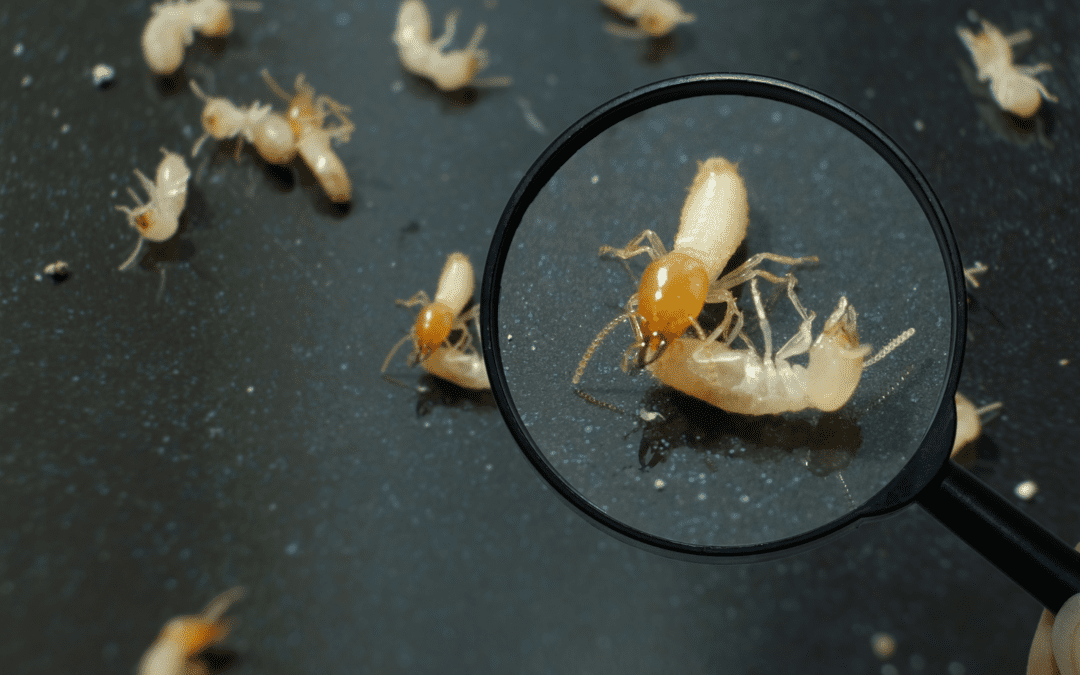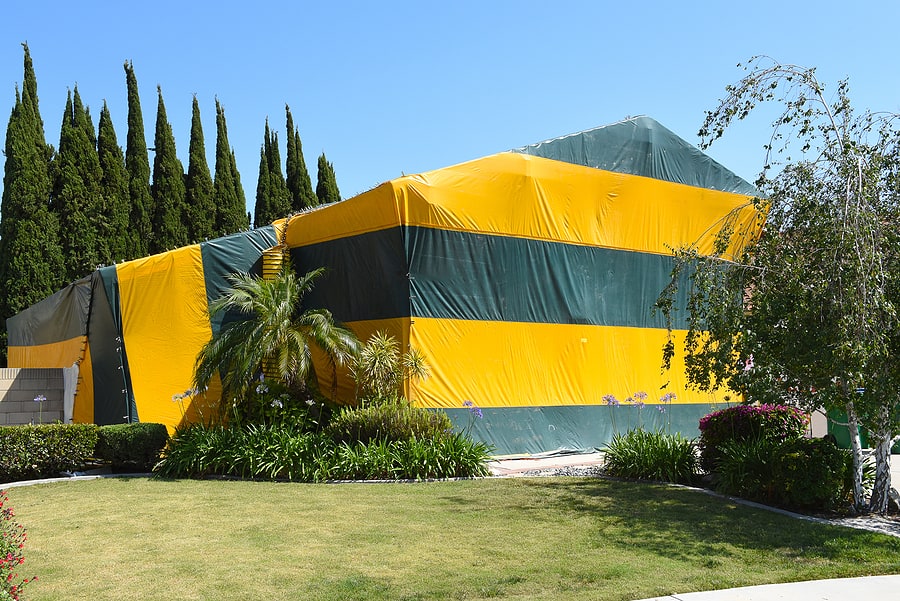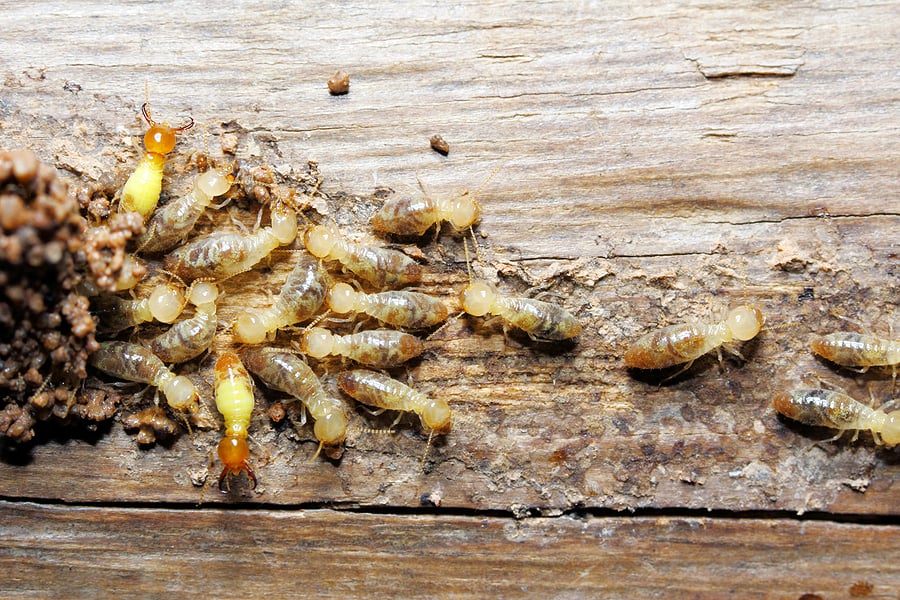READY TO GET STARTED?
REQUEST A FREE ESTIMATE
Fill out the form below or call (855) 789-9807 for a free, no-obligation estimate.
Fill out my online form.

Drywood termites seek dry wood as a food source and will destroy your home in the process. These termites differ from other species, such as subterranean termites, since they tend to create their colonies in wood, instead of in the ground, and need little moisture to survive. Unlike other species, these termites can create devasting damage to homes, excavating wood and ruining it. To prevent them, it’s best to place preventative measures throughout your property.
The first step in preventing drywood termites is inspecting your home. By examining your home, you can get a good idea of what repairs are needed or discover that a termite infestation has established. When inspecting, write down everything you see that’s a concern; this will help overall when relaying to a pest professional. When checking the home’s interior, don’t forget to check in darker areas such as your crawl space, attic, and basements. Check around your baseboards, beams, or other wood materials. Likewise, look at any furniture or firewood inside the home too. As you are investigating the exterior of your home, be extra thorough, as these termites haven’t entered the home yet. Check your foundation, old trees, wooden sheds, and firewood.
Drywood termites are very small, ranging from 3/8 to ½ inch in length, allowing them to fit in the smallest hole or gap. If you find any openings leading into your home, it’s best to repair them immediately. Likewise, keeping your home’s attic and crawlspace well ventilated will help reduce moisture and the risk of a termite infestation. Consider encapsulating your crawlspace or insulating your attic.
Drywood termites are looking for any wood materials to inhabit. Make sure you place firewood at least 20 feet away from the home and raise it off the ground. Additionally, trim all shrubs, bushes, or other dense greenery so that it doesn’t touch the side of your home. If you have old trees, lumber, or tree stumps, consider removing them so these pests don’t infest and make their way inside your home.
Sometimes all the prevention in the world can’t stop termites from infesting homes. If a termite infestation has occurred, it’s best to call your local South Florida pest control company for extra help. A termite professional will provide you with a thorough termite inspection, a termite control plan based on your home’s needs, and recommendations on preventing them in the future.

Hot and humid, South Florida is the perfect habitat for termites! These pests cause significant damage to our homes and cost us millions in repairs, making them one of the most feared insects by homeowners. Knowing how to tell if your house has termites is the first step in eliminating them or being on top of preventing them.
Since Florida hosts a variety of climates, there are many species found in our state. In South Florida, the two most common termites found are drywood and Formosan (subterranean) termites. Drywood termites are known to inhabit sound wood, often infesting wood furniture. Formosan or subterranean termites need soil to live and create mud tubes to look for a food source above the surface, invading the foundation of homes.
We know that all termites are attracted to wood, but each species has their preference. Subterranean termites aren’t as picky about the type of wood and will eat the most common types found in homes, such as pine and oak. However, drywood termites prefer to avoid soil and will eat hardwood floors or wood found in your home’s structural framing.
Firewood and mulch are two major attractants to termites and provide an entry point inside a home. When storing firewood, make sure it is at least 20 feet away from the home’s foundation. Mulch can retain moisture, making it essential to keep it at least 18 inches away from your foundation.
Having unnecessary moisture around the home can create conditions beneficial to termites. Eliminating excess moisture inside and outside is essential in preventing termites. Make sure your yard is dry by sealing any leaks, repairing AC units, and regularly cleaning gutters to divert rainwater away. Consider enclosing your crawlspace to reduce moisture, decrease humidity, and prevent mold and wood rot.
There are several signs that a homeowner can look out for when determining a termite infestation, including:
If you suspect that you have termites in your home, contact your local South Florida pest control company. These professionals will inspect your home and provide a termite treatment and prevention plan.

Termites cause serious and severe damage to homes, destroying the structure and integrity. The damage termites cause can be very expensive to repair, making it essential for every homeowner to recognize termite types and the prevention methods for each.
There are two main termite species in the South Florida area that can pose a major threat to your home, subterranean and drywood termites. Subterranean termites typically swarm in the spring but have been known to swarm at any time of the year. These termites live in colonies underground but will go above ground to retrieve food by building tunnels called mud tubes. In order to survive, they need moisture. You can find these termites in baseboards, inside crawl spaces, wooden beams, and more.
Drywood termites are social insects that also live in colonies. However, they create their colonies in wood, with no needed connection to the ground. While subterranean termites need moisture, drywood termites do not. You can find these termites in furniture, banisters, hardwood floors, and more.
Taking the time to place do-it-yourself preventative measures throughout your home is a great way to get a head start on termite control. You can prevent termites by:
If you suspect you have a termite problem or want to get ahead of termite control, contact our local office for termite control near you, who can provide you with a free termite inspection.

Swarming termites, also known as alates, are termites with wings that leave their colonies with two purposes in mind: reproducing and establishing a new colony. Alates resemble flying ants and will colonize anywhere with a cellulose source and adequate moisture for survival, making your home the ideal environment for a new colony. While alates don’t bite, sting, or eat wood, they are a good indication that there is a termite colony nearby.
Once the original termite colony reaches capacity and is ready to expand, termite swarms occur. These usually happen once per year, although some species will swarm multiple times. Swarms can contain anywhere from hundreds to thousands of alates whose sole purpose is reproduction and expansion of the colony. Once environmental conditions are right, the swarmers will launch themselves into the air and pair off. Once they’ve found their partner, both will shed their wings, mate, and find a new place to nest.
The timing of termite swarms depends on the type of termite you are dealing with. Subterranean termites typically swarm in the spring during daylight hours. Drywood termites swarm in late summer and early fall, and dampwood termites swarm over the summer. Termites will swarm once conditions are ideal, usually the day after a rain shower with overcast weather and winds less than 6 mph. Damp soil after a rainstorm also helps with nest building.
If a colony is already established inside your home, termites may swarm inside. These alates will try to squeeze through cracks and crevices in your foundations and walls to reach open air. Alates are also attracted to light so they can often be found near windows and light fixtures.
Termite swarms vary depending on what species it is. Drywood termite swarms are usually smaller than other termites with less than 100 swarmers. They will swarm in late summer and fall. Due to the small size of the swarm, you may not see the signs of drywood termites until they are already established. Dampwood termites swarm in the summer months. They are of less concern to homeowners as houses don’t typically have the moisture content necessary for them to survive. They can, however, be found in wood structures surrounding homes, e.g. utility poles. Subterranean termites are the most common and have the largest swarms, sometimes numbering into the thousands. These termites swarm in the spring between March and June.
While swarms don’t necessarily mean you have a termite infestation in your home, they are a good indicator that there is a thriving colony nearby. If you spot swarming termites in or near your home, consider a termite inspection to help identify signs of termites you may have missed and ensure you don’t have a hidden colony eating your home from the inside out.
If you suspect termites, contact a professional pest control company who can give your house a thorough inspection and help with a termite control and prevention plan going forward.
How Do I Know if I Have Bed Bugs?
Preparing Your Lawn for Spring
Millipede vs Centipede – Which Is More Dangerous?

One of the most important things a homeowner must do is protect the wood within their structure. Two of the most common causes of wood damage in a home are wood rot and termites. Both of these can cause significant damage by going undetected for long periods of time. Signs of wood rot and termite damage are similar, often making it difficult to determine what type of problem you have. It is important to know which of these you are dealing with in order to properly resolve it. Here are some signs of termites and wood rot and how to tell the difference between the two.
There are two types of wood rot: dry rot and wet rot. Dry rot is caused by fungi that attack wood, destroying it from the inside out. Dry rot can affect any untreated wood that has a 20% moisture content. This type of rot spreads quickly and is also known as brown rot. Wet rot is common in homes that have a preexisting moisture problem such as a leak around an air conditioner, a malfunctioning downspout, clogged gutters, leaky faucets, or shrubs that are too close to the house. With wet rot, the surface veneer of the wood is impacted so it is usually easier to spot. Wet rot can affect any unprotected wood. It tends to be more localized than dry rot and doesn’t spread as much.
Some common signs of dry wood rot include:
Some common signs of wet wood rot include:
Subterranean termites are one of the most common types of termite, although drywood termites can also cause significant damage. Termites eat cellulose that is present in wood, hollowing them out from the inside out. Termites access your home through cracks in the foundation and walls. Because termites eat from the inside out, they can often go long periods of time undetected.
Some common signs of termite damage include:
Whether you have wood rot or termites, the most important thing is to recognize the issue and get it resolved as quickly as possible. If you have an issue with termites or any other pests, contact your local pest control company for a free analysis and treatment plan.
The Importance of Commercial Pest Control
Fact or Fiction: Mothballs Keep Snakes Away